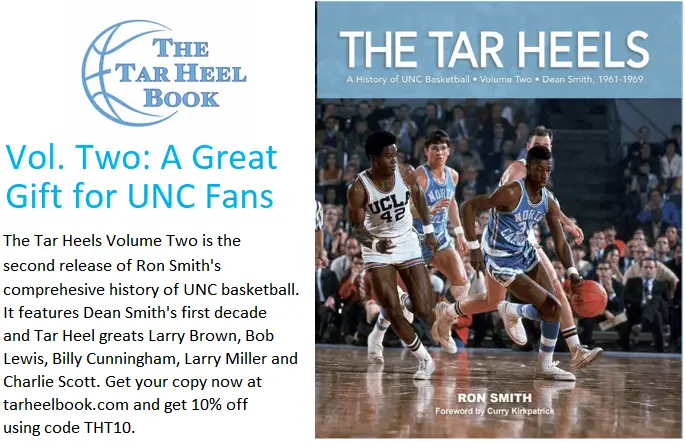By R.L. Bynum
As ACC adds Stanford, Cal and SMU beginning in the 2024–25 school year, the first concern should be for the athletes who must routinely take cross-country flights while also being students.
The travel sounds daunting because it is. But there are scheduling models that could make it easier.
During a teleconference on Friday, ACC commissioner Jim Phillips said that the current 14 football-playing teams would only be forced to play in California every other year, while Cal and Stanford would make trips east three or four times a season.
Phillips said basketball teams would only make that trip west twice over four years, with the 14 current members making nine trips to California each season.
“Go play Cal and Stanford on the same road trip,” Phillips said. “Go to the Bay Area, play Thursday, Sunday or Wednesday, Saturday or Saturday, Monday like we do in the in the ACC.”
For Cal and Stanford, their basketball teams would make three or four trips east a season, Phillips said.
Stanford and Cal likely would play their out-of-state road ACC games the same weekend in sports such as soccer and basketball, maybe playing N.C. State and Duke one week, with another trip over to face Carolina and Wake Forest, and another to face Virginia and Virginia Tech.
For sports other than football and basketball, Phillips said teams in some sports would go west once a year, and some wouldn’t make any trips.
None of the three new ACC schools play men’s lacrosse, for example. SMU also doesn’t play baseball, fencing, field hockey, women’s gymnastics, women’s lacrosse, softball or wrestling. Cal also doesn’t compete in fencing or wrestling.
Stanford and Cal obviously would play home and home in basketball. That would leave them each with nine road league games, requiring four road trips east if one included three games.
Carolina has won all 13 men’s basketball meetings with Stanford, including twice at Stanford (88–74 in 1983 and 96–72 in 2017) and three times in Chapel Hill (89–55 in Carmichael in 1985, 87–76 at the Smith Center in 1988 and 90–72 at the Smith Center in 2018).
While multiple opponents will be included on the same trips for most sports, that won’t be the case for baseball and softball.
“We would not do it over a week,” Phillips said. “We would do a weekend series and then get those teams home. So, not spending an entire week on the West Coast or vice-versa with our new members.”
An excellent example of the scheduling that the addition of the California schools would require has come in women’s soccer, including in the last couple of weeks, and in field hockey last season.
Two weeks ago, Cal played at Tennesee on Thursday, Aug. 17 (losing 4–1), then at UNC on Sunday, Aug. 20 (falling 3–1).
“I feel like we’ve got a really good start,” Phillips said of figuring out the scheduling dynamics. “And, honestly, we didn’t want to move forward until we had that answered. That work took us a good week to really investigate and explore and be honest about it, not try to force it and be artificial about what the trips are. So, work to do, but feel — as we sit here today — good about the direction we’re going and understanding what that looks like.”
In the last full week of August, USC beat Duke 3–1 on Thursday, Aug. 24, then lost 4–0 at Carolina on Sunday, Aug. 27.
On its way to winning the national championship last season, UCLA took 2–1 road victories at Duke on Thursday, Sept. 1, and at UNC on Sunday, Sept. 4. Obviously, the Trojans’ and Bruins’ future road trips will be mostly in the Midwest as Big Ten members.
Carolina’s field hockey team took a similar trip in the opposite direction last year during its undefeated national championship season. It could be a future ACC trip. The Tar Heels rolled to a 7–0 victory on Friday, Sept. 9, at Cal and then easily beat Stanford 6–0 two days later.
Cal and Stanford are used to this kind of scheduling in the Pac-12, although not with such long trips. Both are travel partners; in most sports, both play home games the same weeks and road games the same weeks.

In women’s soccer, for example, both play Arizona and Arizona State (also travel partners) the same week, on Thursday, Sept. 28 and Sunday, Oct. 1, swapping out opponents on those dates.
The closest the Tar Heels’ men’s basketball team has come to playing Cal in Berkeley was their only loss in five meetings, a 78–71 setback at the Oakland Arena in 1998. The Bears lost 74–70 at Carmichael in 1973 and 71–47 at the Smith Center in 1997.
Carolina has split four women’s basketball games with Cal, winning in Carmichael 77–67 in 1985 and 70–65 in 1999 and losing at Berkeley 77–72 in 1988. The Tar Heels are 1–3 against Stanford, winning at Carmichael 70–54 in 2014 and losing at Stanford 74–65 in an NCAA regional semifinal in 2014.
In football, most of the existing ACC members would have at least one California league trip per season and sometimes two. The team playing host to the Cal-Stanford game would have to fly east three times while the other would have four such trips.
Cal swept a home-and-home football series with Carolina, winning 35–30 at Kenan Stadium in 2017 and 24–17 at Berkeley in 2018. UNC split a home-and-home series with Stanford, winning in Chapel Hill 28–17 in 1997 and losing 37–34 in 1998 in Palo Alto.
Tar Heels fans can only hope for more of the latter if both join the ACC.
Photo courtesy of the ACC



